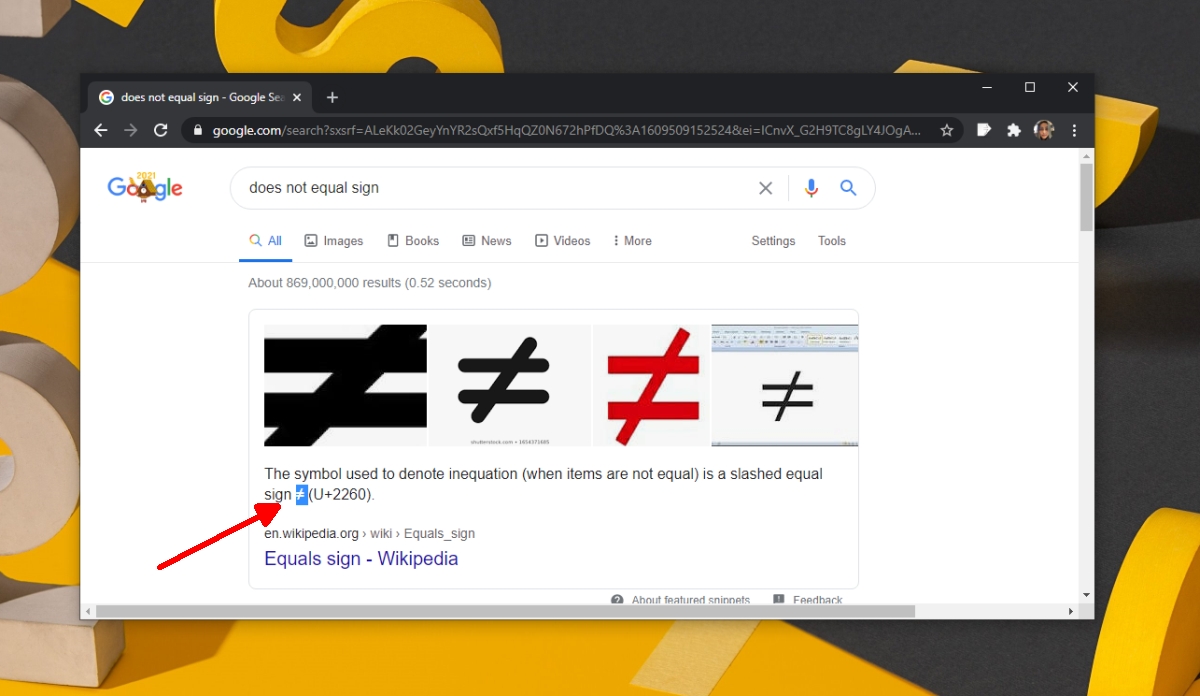
- Does not equal sign ascii how to#
- Does not equal sign ascii software#
- Does not equal sign ascii code#
If it returns False, the else branch is executed.
Does not equal sign ascii code#
In the case of an if-else statement, first the if branch checks the validity of the branch and executes the code if it returns True. The if statement will execute the code if the if branch returns True otherwise, nothing happens. # If a is greater or equal than b, write "Hello ". This is because I haven’t set any else statements. However, if a is not greater or equal to b, nothing will happen:

# If a is greater or equal than b, print "Hello "Ī = input("Enter a numerical value, a = ")ī = input("Enter a numerical value, b = ") If a >= b, the computer will print a simple message: Instead of choosing numerical values arbitrarily as before, we will write a script that will invite the user to input two numbers to be stored in the variables a and b. Like we did previously, let's translate some instructions we want to give the computer into code. In other words, we will use the >= operator to decide whether the if statement needs to be executed. We can also use the greater than or equal operator with the conditional if-else statement. Plus, once you finish the course, you'll be able to show off your new skills on your resume! Greater Than or Equal To And Conditional Statements in Python This course is designed by Python experts and includes 95 interactive exercises to help you learn the programming essentials in just 10 hours. If you’re a beginner in Python, our Python Basics Part 1 Course is the perfect place to start. Let's answer a series of questions with the help of this Python comparison operator:Īs you can see, the greater than or equal to operator returns True if the left side of the operator is greater than or equal to the right side. Example: Using Greater Than or Equal To in Python These operators compare numbers or strings and return a value of either True or False. The "greater than or equal to" operator is known as a comparison operator. It will return a Boolean value – either True or False. Well, to write greater than or equal to in Python, you need to use the >= comparison operator.
Does not equal sign ascii how to#
Many programming beginners wonder how to write “greater than or equal to” in Python. In this article, let’s explore how to use the greater than or equal to comparison in Python.
Does not equal sign ascii software#
By holding down the Alt key and pressing a combination of numbers you can display characters without using software tools like the Character Map etc.Comparison operators are an important part of Python programming. You also have the option of using keypress codes to display special characters. In the Cortana search box type Character Map and select from the results. Or from the Metro screen move to the top right corner and type Character Map in the search field. Type Character Map and select the app from the resulting app results. To open the Character Map: (Windows 8/8.1) To open the Character Map: (Windows 7)Ĭlick on All Programs > Accessories > System Tools You can then copy the selected character(s) and paste them in a desired location / file. The Character Map can be used to search for characters that are available in selected fonts. They can be used by either pressing a combination of keys on the keyboard or utilizing the Character Map within Windows.

Special characters are characters that are not present on your keyboard layout.


 0 kommentar(er)
0 kommentar(er)
